#traditional witch
Explore tagged Tumblr posts
Text

Your purchase goes directly to support an American LGBT+, multiply-disabled pagan artist in their full-time and only income.
203 notes
·
View notes
Text









Yule > Christmas
🌲🕯️👻🧣🪵🕊️🥧❄️⛄️🌲
#traditional witch#yule#yuletide#witchcraft#hearth witch#pagan witch#witchy things#cottage witch#house witch#hearthcraft#paganism#witch#winter#winter solstice#pagan sabbats#dark christmas
57 notes
·
View notes
Text
Holed Stones in English Folk Magic
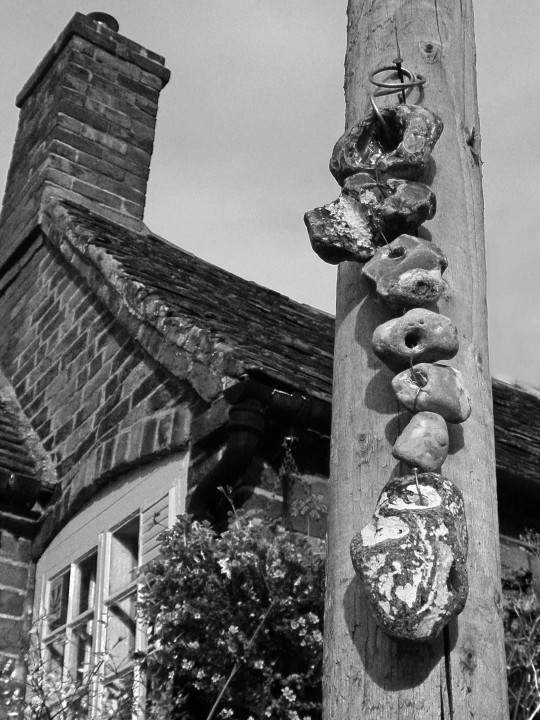
Sources at the end
Stones with naturally occurring holes in them have many uses in magic all over the world. In England they have been used for protection and luck as well as in medicine. Holed stones are known by many different names, In England they have been and are known by numerous names such as Hag stones, Witch stones, Serpents'/Snakes' eggs, Adder stones, and Lucky stones. For the sake of clarity, I will be referring to them as ‘holed stones’.
Luck and Protection
Holed stones are used as amulets for protection against Hags, witches, faeries, and other spirits, when they are used in this way they are referred to as hag or witch stones. People would hang a holed stone above the door of their home or barn, and sometimes passageways within the home. People would also keep a small holed stone in a pocket for luck and protection.
Holed stones have also been known for being lucky, being worn around the neck for luck or tossed over the shoulder after spitting through the stone's hole to grant a wish. It was also said that is a person tied a holed stone to their house keys, those who resided in the home would be prosperous.
In communities where fishing and/or sailing was common the use of holed stones for protection was common, tying them to the bows of boats or inside of smaller rowing boats for protection while at sea. Holed stones were also used to protect against drowning, Christopher Duffin (2011) writes, “The coxswain of the Ramsay lifeboat [during 1929], also a fisherman by trade, always wore a small discoidal [holed] stone around his neck, threaded with copper wire. The amulet, passed down through three generations of fishermen, was credited with preserving the life of the wearer through terrible maritime circumstances.”
Medicine
As these holed stones protected against hags, witches, faeries, and other spirits they would often be used in medicine, as magic was often thought to be the cause of illness.
One of the illnesses holed stones were used to treat is ‘hag-riding’, in the book A Dictionary of English Folklore it is defined as “a frightening sensation of being held immobile in bed, often by a heavy weight pressing on one’s stomach or chest […] In folklore, it was thought of as a magical attack, though whether by demonic incubus, ghost, harmful fairy, or witch varied according to place and period.” (Simpson & Roud, 2003) Today hag-riding is understood to be sleep paralysis. To treat hag-riding a holed stone would be hung above the bed of the sufferer or, if the sufferer is an animal, placed in a stable.
This belief applied to both humans as well as other animals; hag stones were often used in the treatment of ill livestock. In Lancashire holed stones would be tied to the back of cows to protect them from all forms of harm, “self-holed stones, termed ‘lucky-stones,’ are still suspended over the backs of cows in order that they may be protected from every diabolical influence.” (Harland and Wilkinson 1873).
Sources:
Thwaite, A.-S. (2020). Magic and the material culture of healing in early modern England [Apollo - University of Cambridge Repository]. https://doi.org/10.17863/CAM.63593
Vicky, King (2021, November 11). Hag Stones and Lucky Charms. https://www.horniman.ac.uk/story/hag-stones-and-lucky-charms/
Pitt Rivers Museum, Accession Number: 1985.51.987.1 https://www.prm.ox.ac.uk/collections-online#/item/prm-object-239947 (c) Pitt Rivers Museum, University of Oxford, Date Accessed: 21 January 2024
Adams, Thomas, fl. 1612-1653., 2013, A commentary or, exposition vpon the diuine second epistle generall, written by the blessed apostle St. Peter. By Thomas Adams, Oxford Text Archive, http://hdl.handle.net/20.500.12024/A00665
Jacqueline Simpson & Steve Roud (2003). A Dictionary of English Folklore. Oxford University Press. https://www.oxfordreference.com/display/10.1093/oi/authority.20110803095941856
Christopher J. Duffin (2011) Herbert Toms (1874–1940), Witch Stones, and Porosphaera Beads, Folklore, 122:1, 84-101, DOI: 10.1080/0015587X.2011.537134
Harland, J., & Wilkinson, T. T. (1873). Lancashire Legends: Traditions, Pagents, Sports, & C. With an Appendix Containing a Rare Tract on the Lancashire Witches, & C., &c. G. Routledge. https://archive.org/details/cu31924028040057
Photo source:
File:Hag Stones (8020251781).jpg. (2023, February 2). Wikimedia Commons. Retrieved 04:11, January 26, 2024 from https://commons.wikimedia.org/w/index.php?title=File:Hag_Stones_(8020251781).jpg&oldid=729610598.
#folk magic#witch#witchcraft#English folk magic#folklore#folk medicine#hagstone#hag stone#pagan#witchblr#green witch#magika#magic#witches#occult#folk witchcraft#folk witch#cunning folk#image description in alt#charms#traditional magic#traditional witch#traditional witchcraft#i hope this isn't absolute crap#mine#resources#my grimoire
151 notes
·
View notes
Text
Lately I've been thinking a lot about spirit-led initiations.
I was never really initiated into my practice, and because of the journey I've taken over the years I've been practicing, I've never felt like I was allowed to be initiated. Everything felt impermanent and ephemeral, like the tides were always shifting under me. Initiation felt too... permanent, I suppose. Now that I'm 20 and I've settled into my practice, and have been settled for a couple years, I'm considering it as an option.
Because of the nature of my practice, having any kind of initiatory rite or ritual be spirit-led just... makes sense. By my familiar spirits, for me, unique to us. However, I have no experience with something like this, and don't really know anyone who does, and the idea of an initiation of some kind feels right but daunting at the same time.
If anyone is comfortable sharing aspects of it, what did your spirit-led initiation look like? Was there much pre-planning, or was it more "the moment felt right and we just went for it"? What did the conversation between you and the spirits involved look like, both before and after? Did you outline expectations of an initiate beforehand?
Many thanks, as always.
#traditional witch#spirit led initiation#spirit initiation#witchcraft#'familiar spirits' in this context just means spirits i'm familiar with
60 notes
·
View notes
Text
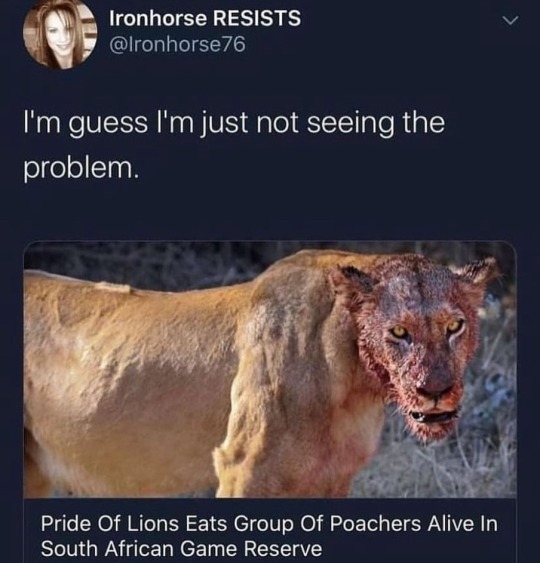
“The only body part we found was one skull and one bit of pelvis, everything else was completely gone," said the park owner.
#witchcraft#witch#witches#traditional witch#traditional witchcraft#magick#occult#tradcraft#witchblr#witchy vibes#spirituality#gothcore#goth aesthetic#goth
170 notes
·
View notes
Text
for my fellow witches who practice christian folk magic and use the rosary, I've written a special set of prayers for Palestine. Feel free to use and distribute this if you wish.

#witch#witchcraft#witchy#witchblr#traditional witches#traditional witch#traditional witchcraft#folk witch#folk witchcraft#folk practice#folk practitioner#christian folk witchcraft#christian folk practitioner#catholic folk magic#catholic folk witchcraft#catholic folk practitioner#prayer beads#rosary#rosary prayers#folk christianity#palestine#gaza#israel
101 notes
·
View notes
Text

#witches#witchcraft#witch#baby witch#witch community#witches of tumblr#wicca#magick#wiccan#the occult#occultism#folk magick tradition#traditional witch#traditional witchcraft#folk magic tradition#cunning folk#cunning folk of the crooked path#chaos magick#hoodoo witch#hoodoo
25 notes
·
View notes
Text
More on Robin AssArte
“India, the last home of true polytheism, has begun to succumb to the monotheistic battery of Islam and Christianity, and to this day, when Hindu religion is taught o westerners, the “acceptable” form is to tell everyone that Hindus have ALWAYS believed in “one God” - Brahman and how all the other gods were mere aspects of “Him”. Idk what to say
“He (witch father) who was called the ‘All Father’ by the Pagan peoples of Northern Europe” so wigch father = Odin = Dagda = Zeus = Dionysus = Horny black goat = Azael = dumb Christian’s called him devil. I don’t care if you’re a soft polytheist but holy fuck don’t make weird historical claims
“He was called Hob-th’rus, but among His more inner names are Sator and Conal Cernac” ACCORDING TO WHO SIR? SOURCE PLS
“While I am a true polytheist, that is, a person who does not believe all gods and goddess of ancient times are ‘aspects’ of a greater divine force or God” you literally do believe that, you believe witchfather = all chthonic and mercurial gods. you believe most goddesses come from a “dark” earthy fate godddess who is also a light spring sex goddess. Oh and you you claim her name is “KOLYO”.
For all his rambles about etymology I hardly see him cite his sources. There’s no foot notes.
“Hel and Persephone are the same goddess” I am going to drink battery acid
“Pale people refers to the dead” I will give this man my organs if it’ll stop him from claiming the fae are the dead, or nature spirits.
“In the modern day, what pass for ‘Pagan’ religious models tend to be created by certain left wing people to bolster some equally left wing ideologies. True and honest ‘Paganism’ is hard to come by” fucking EW didn’t this man spam people/groups with porn, harass people and uhm plagiarize a bunch of shit? What a paragon of pagan virtue
#traditional witchcraft#witchcraft#witch authors#traditional witch#witchcraft books#this man is a laughingstock#what an edge lord
20 notes
·
View notes
Text
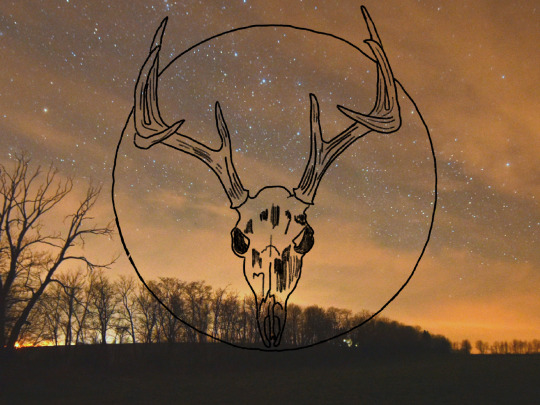
Like the Witch Father, the Witch Mother is the dual-natured Archetypal Divine Feminine. She is life and death, creation and destruction, She is all. In Traditional Witchcraft, She is an initiator into witchcraft and the being that creates and molds the world to Her whim. The Witch Mother is essentially Witchcraft itself.
In the same way it is hard to define and pinpoint the Witch Father, the Witch Mother is another enigmatic spirit essential to Traditional Witchcraft. Across cultures and centuries, She has been known by many names. Diana, Herodias, Frau Holle, Baba Yaga, Sa Rejusta, the Queen of Elphame, and Nicnevin are some of the names that She has gone by.
As it stands, the Witch Mother is the Mother of all Witches. From her, we begin to learn the ways of the Crooked Path. Usually, it is by chance encounter that we meet Her, or one of Her emissaries, and we are put through trials. Through these trials, however, comes the enlightenment of the Path and we find our Witch Fire lit. With Her blessings, we are granted access to the unseen.
The Witch Mother is a Dark Feminine Great Spirit. She is the primordial womb from which all life emanates. She forms the Earth to Her liking. The Witch Mother holds sway over life and death, the seasons, and even the turning of the day. She is the Magna Mater. She fiercely protects Her children and gives us the knowledge and tools that we need in order to defend ourselves from those wishing us harm.
Her lore can be dark and sometimes violent. But it’s necessary as a protectress for Her family. When we prove ourselves to Her, She becomes a Great Ally for us in our paths.
Baba Yaga
In Vasilisa the Beautiful and Baba Yaga, we come to learn that Baba Yaga has mastery over the world. Through her servants, the days and nights turn over. In the story of Natasha, Baba Yaga has a towel that can create rivers and a comb that can create forests. Baba Yaga occupies the archetype of Witch Mother as the initiator and creatrix of the world. She gives these girls tasks which at first glance seem impossible but by their wit and cunning natures, they overcome them. This leads to Baba Yaga fulfilling her promise and granting them the boon they came to her for. For Vasilisa, the fire she seeks also burns her stepmother and sisters to ashes leaving her free from their oppression and hatred.
Frau Holle or Mother Hulda
In the story of Mother Hulda, two step-sisters end up in the Otherworld and in service to Her. The first sister is hardworking while the other one is lazy. The hardworking sister drops her spindle into the well while trying to clean it and must figure out a way to get it out. She falls in and comes out in the Otherworld. She meets an apple tree asking for help to get its ripe fruit down from its branches and a loaf of bread asking to be taken from the fire before it burns. Naturally, she obliges. Coming to a house in the meadow, she meets Mother Hulda who asks her for help around the house. This sister is very hardworking and listens to all of Mother Hulda’s requests, including how to fluff her pillows so the feathers fall so it will snow on Earth. Accomplishing this and asking to return home, she is sent back with gold falling all about her to keep.
The second sister, being lazy and greedy jumps into the well and into the otherworld wanting her own gold. She marches past the apple tree and the bread not stopping to help them, and comes to meet Mother Hulda and agrees to work for her as well. She performs well on the first day and gives way to laziness in the coming days. When she asks to go home, expecting to be showered in gold, she is told to “get lost” and is instead showered in tar.
In this story, we see Her control over the weather and her home in the Otherworld. She has the power to bless and to curse. She expects those who want to learn witchcraft and the occult arts to hold up their end of the bargain. She grants power to those who are willing to work for it.
Queen of Elfame
In several witch trials in Scotland, we see the Queen of Elfame make an appearance. In the trial of Bessie Dunlop (1576), she confesses that she has traveled to the Otherworld and has communed with the Queen of Elfame several times. For her kindness when in the guise of an old woman, Bessie is granted a familiar who teaches her natural remedies, knowledge of where to find lost items, and information about prophecies.
Several years later, in 1588, Alison Pearson (also styled as Alesoun Peirsoun) was burned at the stake for communing with the Queen. In Elfame, she learned of medicinal herbs, healing arts, and how to make charms and potions which she sold.
In 1597, Andro (Andrew) Man confesses that he has lain with the Queen of Elphen and they begot many children together. He further confessed that through her, he would become knowledgeable in all things, help and cure all sicknesses except death. In his confession, Andro Man goes on to explain that “the Queen of Elphen has a grip of all the craft, but Christsonday (the Devil) is the husband and has all power under God.” They also have spirits in their company that are known to Man.
Aradia: or the Gospel of Witches
In Aradia, it is attested that Diana is the Mother of Witches. She teaches her daughter, Aradia, witchcraft and charges her to go to Earth to teach humans this art. Specifically, Aradia is sent to teach the poor and the slaves witchcraft in order to free themselves from their lot in life.
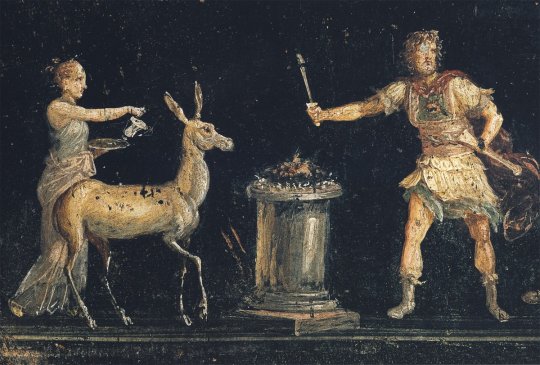
#witch mother#witch fire#witchblr#witch#witchcraft#traditional witch#traditional witchcraft#aradia#diana#witch trials#queen of elfame#baba yaga
113 notes
·
View notes
Text
December Witchy Ask Game ! ⋆。⟡⋆˙✮

1 ⟡ How do you cleanse or purify yourself from the past year?
2 ⟡ Do you do yearly divination or try to predict the incoming year through omens of any kind? what does that look like to you?
3 ⟡ What 'End of Year' Holidays do you celebrate in your practice, if any?
4 ⟡ Do you have any favorite holiday foods ? what magical correspondences do you assign to them?
5 ⟡ What about favorite holiday songs? is there any song or musical genre that is particularly significant to your practice, or accompanies your work more often, around this time of year?
6 ⟡ When was the last time you did an uncrossing? how would you know if you need one?
7 ⟡ When was the last time you did a road opener? how would you know if it's time for one?
8 ⟡ What Spirits or Deities reign over this time of year in your practice? can you tell us a bit about them?
9 ⟡ What's your favorite end of year superstition or charm?
10 ⟡ What scent reminds you of the magic of December? where do you find it? (incense blend, warm drink, food, other source maybe?)
11 ⟡ What's the last thing you wrote down in your grimoire / book and what are you looking forward to working on next year?
12 ⟡ What do you do to rest in your practice? do you take time off from spiritual matters, meditate or take care of your spiritual self in some other way? (to prevent exhaustion and even burnout, for example)
⟡ Drop an ask and feel free to reblog to let your followers know you want to answer some of these too ! ⟡
#ask game#december ask game#witchy ask game#witchblr#witchcraft#folk witch#traditional witch#traditional witchcraft#folk witchcraft
11 notes
·
View notes
Text

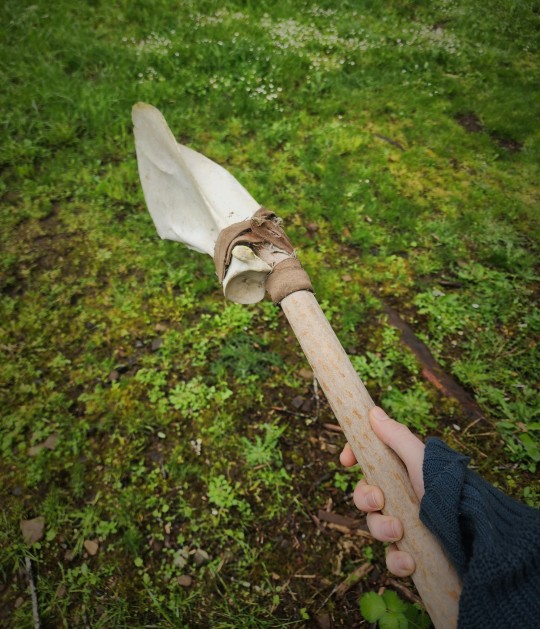
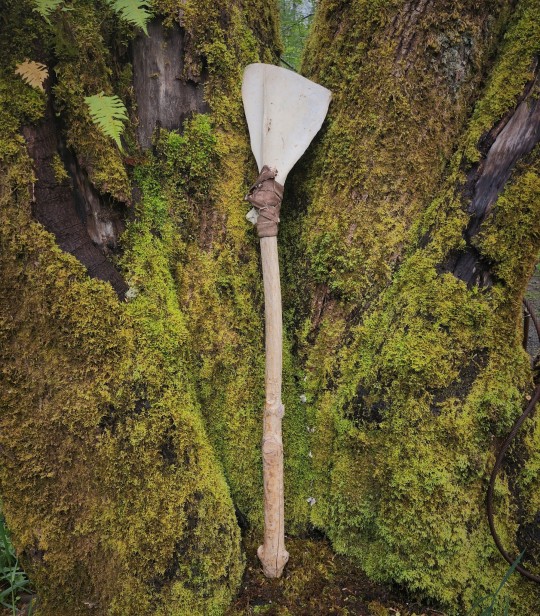
I was recently in the forest searching out some particular bones I need for a set of linked Sentry Fetishes, when I made an odd discovery.
No sooner had I found the bone I was looking for than I spotted this strange item buried beneath the leaf litter. It appears to have been fashioned some time ago, though I have no clue why, or by whom...
42 notes
·
View notes
Text

If aware that another is wicked, say so:
Make no truce or treaty with foes.
Havamal 127
*
Odin Hates Nazis patch | $8+shipping
A simple, straightforward message that the one-eyed, biracial, gender-nonconforming god does not approve.
2.5″ wide with an iron-on backing.
Projected to start shipping November 22nd.
#witchblr#paganblr#norse pagan#lokean#traditional witch#odin hates nazis#norse odin#norse witch#norse paganism
185 notes
·
View notes
Text









✨✨🧚🏽♂️✨✨
#hearth witch#hearthcraft#pagan witch#witchcraft#traditional witch#cottage witch#house witch#witchy things#paganism#witch#quotes#witchy quotes#witchcraft quotes#kitchen witch#november#november quotes
26 notes
·
View notes
Text
Getting to know my decks part 3!
Botanica Oculta Tarot edition
Part 1 - Antique Anatomy
Part 2 - Casanova
This deck is interesting, I found it in a random shop in Colorado for 50% off. It has a few typos on the cards and in the handbook, so I could see why it’s 50% off lol. The art is cool though, and I was immediately drawn to it because I love flowers. This deck seems to be very focused not only on the meaning of specific flowers, but also very Godly focused. You’ll see that a little bit in the reading. This is my most recent deck I’ve bought, and it was a little ambiguous with the information it decided to give me, so I’ll do my best at interpreting it. My energy is a little low, so this may not be the best read but if I don’t do it now, I never will.
Here we go!
1. Please introduce yourself
The Chariot - The Bay Laurel
Classic meaning: Profit, trophy, success at any cost, triumph, victory, conquest, material interest, benefit.
Floral meaning/story: Good luck in business, ability to manage cash flows, victory over a rival, problem solving/achievement of goals, immortal glory of earthly deeds. A laurel twig can protect from ill-wishers, save from accidents, ensure steady flow of money, increase your chances of victory, help reveal genetically inherent talents.
My interpretation: I honestly don’t know what to make of this first card. It almost feels like the deck has a pretty big ego, maybe that’s just me but pulling the chariot as the introduction card is very much a power move haha! Like I said, I honestly don’t know what to make of this introduction so I’m just going to move on.
2. What are your strengths?
4 of Pentacles - The Columbine
Classic meaning: Success, stability, guarantees, practicality, control of events, wise use of resources, awareness of responsibility, everything going according to plan.
Floral meaning/story: Healing from greed and grumpiness, symbol of the Holy Spirit, associated with angels, doves, or an elf’s shoe because of its shape. Dedicated to the goddess Freya.
My interpretation: It seems like it’s telling me a very similar thing to how it was trying to introduce itself. Its strength seems to lie in the power of Deities and success in all aspects of life.
3. What are your limitations?
10 of Swords - The Coronilla Minima
Classic meaning: Failure, collapse, pain, pessimism, clinging to the past, inevitable end, frustration of hopes.
Floral meaning/story: Toxic plant that affects the heart. Animals stay away from it because they know they’ll get sick. It is toxic to humans as well, but in traditional medicine it was used as a heart remedy in specific doses.
My interpretation: This card is interesting to me because it brings up the heart. I was once told that my heart chakra is closed and that’s something I need to work on, so I feel like this deck is telling me that as long as that is still the case, it may be challenging to work with this deck. At the same time, I think the deck is telling me that it is a little stuck in what it might consider tradition, and that maybe the heart of this deck is also a little closed off. I feel it would take a lot of trust to effectively work with this deck, and I think maybe the deck and I may have very different ways of thinking of things, especially since I am not so much of a traditional person.
4. What can I learn from you?
The High Priestess - The Pomegranate
Classic meaning: Intuition, inner voice, mystery, potential, trust, subconsciousness, silence, impartiality, observation, surveillance, passive behavior, subconscious aspirations. Prophecy, clairvoyance.
Floral meaning/story: Example of vitality, endurance, abundance, eternal life, immortality, femininity. Aphrodite, a feminine essence, full of love. Pomegranate seeds became the means to stay alive and unharmed in the underworld for Persephone.
My interpretation: The word “trust” comes up again, as I mentioned in the last card I think trust in this deck will be the biggest thing I’m going to have to overcome. The deck seems to be telling me that I can learn to trust in myself and my power if I am able to put trust in the deck.
5. What is the best way to work with you?
The Star - The Aster
Classic meaning: Hope, communication, illusion, dream, fantasy, origin of feelings, fragility, lightness, time before dawn.
Floral meaning/story: A gift from the Gods, a talisman, particle of a distant star, sadness for the lost paradise, symbol of beauty, accuracy, elegance, charm, modesty, and the birth of love. Ancient belief says if you go into the garden at night and stand among the asters, you’ll hear quiet whispering. The flowers are communicating with the stars.
My interpretation: This is where I get the idea that this deck is more faith/deity centered. I feel that the deck is telling me the best way to work with it is in juncture with my “religion”, Gods/Goddesses, and faith. This also makes sense why trust plays a big part in this deck. You cannot have faith without trust. The word “fantasy” in this instance is interesting, because it’s almost as if the deck knows I would be skeptical. It wants me to k ow that the best way to work with it is to play into what I might consider “fantasy”, and just put my faith into it.
6. What is the outcome of our relationship?
The Hierophant - The Day Lily
Classic meaning: Spiritual teacher, faith, confession, tradition, morality, social norms/choices, inner position, upbringing.
Floral meaning/story: Greatness and honor, spiritual purity, relationship with God, adherence to tradition, mentoring, compliance with the rules. The Flower of Joy, the touch which takes away all sorrows. Fertility, erotic love, good luck, lasting love.
My interpretation: Again, very religion and faith based outcome here. It seems like the deck is telling me that it can help me understand my faith and spirituality a little more, and it feels it may be able to instill a sense of discipline into me through the power of faith and confession. I can see how this would be a good thing for me, there are things that I do on a day to day basis that break my peace, and maybe if I had a little more adherence to was is traditional, I wouldn’t have these issues that keep happening in my life.
Final thoughts: This is probably going to be a challenging deck for me to work with. It’s asking me to do a lot of things I have very loudly proclaimed I would never participate in. This deck almost feels like some sort of authority figure, and I’m just simply someone who will always challenge authority. If I had more of an open mind and willingness, I could see how this deck may benefit me. I’m not turned off to it completely, but it just seems like we are very different from each other. I would be interested to see how a real reading with this deck goes. Maybe i’ll keep my readings with this deck purely related to the divine, tradition, faith, morality, and things of the sort.
#iwitch-plus#personal#witchcraft#witch#wicca#green witch#pagan#tarot#witchblr#witchy#witches#baby witch#divination witch#divination#tarotreading#daily tarot#traditional witchcraft#witchy things#cosmic witch#witch craft#Aphrodite#persephone#traditional witch#botany#tarot deck#witchcore#witch aesthetic#beginner witch#pagan witch#greek gods
3 notes
·
View notes
Text
Types of Witches 🧙🏽♀️🧹✨
Hello darlings 🥰
Today, let's talk about the different types of witches you might encounter in the world of witchcraft! While every witch is unique, there are certain labels that have emerged to describe specific practices and areas of focus.

Here are some of the most common types of witches:
🥐Kitchen Witch: This type of witch uses cooking and baking as a form of magic, infusing their food with intention and energy. They often have a deep connection to nature and use herbs and other natural ingredients in their cooking.
🦊Hedge Witch: Hedge witches are typically solitary practitioners who work closely with the natural world. They often have a special connection to animals and use divination and herbalism in their practice.
🌿Green Witch: Green witches focus on the natural world and use herbs, plants, and other natural materials in their spells and rituals. They often have a deep knowledge of botany and use their skills to heal both themselves and others.
🔮Eclectic Witch: An eclectic witch is someone who doesn't adhere to any specific tradition or path but instead takes inspiration from a variety of sources. They may use elements of multiple types of witchcraft in their practice.
🧹Traditional Witch: This type of witch follows a specific, established tradition or path. Examples include Wicca, Druidry, and Ceremonial Magic.
Remember, these are just a few examples of the many types of witches out there. Everyone's practice is unique and personal, so don't feel like you have to fit into a specific label. Embrace your own individuality and let your practice evolve as you do ✨
————
🌞 If you enjoy my posts, please consider donating to my energies 🌞
✨🔮 Request a Tarot Reading Here 🔮✨
————
With love, from a Sappy Witch 🔮💕
Blessed be. 🕊✨
#witchcraft#witches#witch#witchblr#types of witches#kitchenwitch#hedgewitch#greenwitch#solitarywitch#covenwitch#witchy#witchyvibes#traditional witch#witchythings#tarot witch#lunar witch#magick#pagan#pagan altar#paganlife#pagan wicca#paganblr#wicca#wiccapedia#occult#spirituality#mine#sappywitch#sappywitchcoven#blessed be
35 notes
·
View notes
Text



Saturday magic
5 notes
·
View notes